A wander crosstown to the Met with a destination. Or rather three. The first – Water Memories – explores water’s significance to Indigenous peoples and Nations in the United States through historical, modern, and contemporary artworks. The second – right next door – Art of Native America: The Charles and Valerie Diker Collection rotation honors the diversity of Native life with artworks old and new created against the backdrop of ongoing Euro-American colonialism and environmental devastation.
There’s a wonderful cabinet of model canoes. Here’s a bark sculpture

By contrast, an abstract painting by Arthur Dove from 1929. Dove lived in a waterside cottage near Noroton Point, Connecticut on the Long Island Sound.
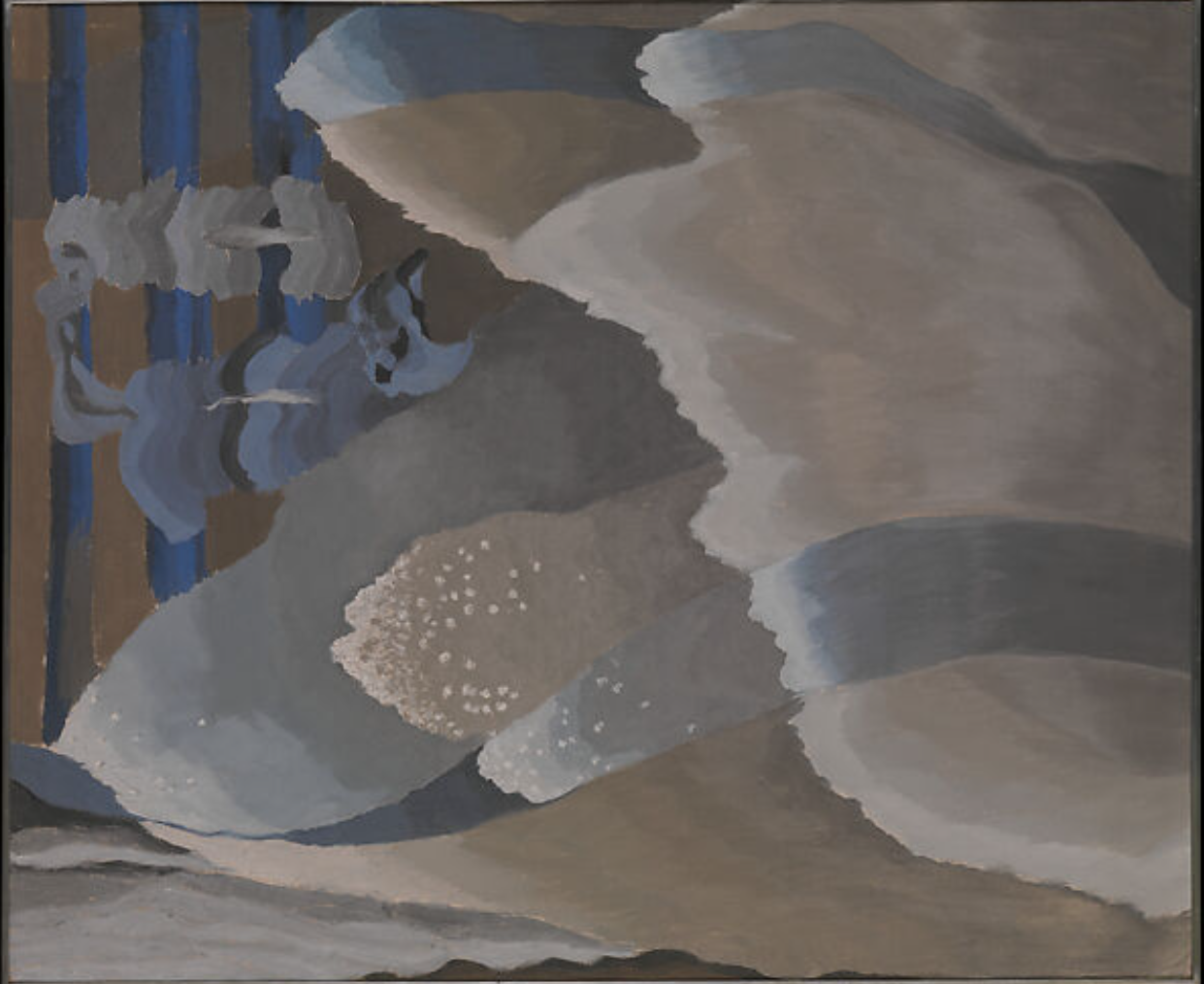
William Merritt Chase painted At the Seaside circa 1892. He was the director of the Shinnecock Hills Summer School of Art in Southampton, on Long Island, NY near the Shinnecock reservation. It shows a leisurely day at the beach.
Jeremy Dennis (Shinnecock) writes:
This land is situated on the Shinnecock people’s ancestral territory—of which more than 4,422 acres was stolen through an illegal transaction in 1859. The school and Chase’s stay on Long Island were devised by Mrs. Janet S. Hoyt, a wealthy patron of the arts and an artist who lived in the Shinnecock Hills. Hoyt proposed a summer employment opportunity for Chase with the end goal of developing a real-estate venture and transforming the area into a summer-resort destination. Despite the increased eagerness to settle in the Shinnecock Hills, the Shinnecock Indian Nation has remained vigilant in asserting their rightful title to their ancestral land.
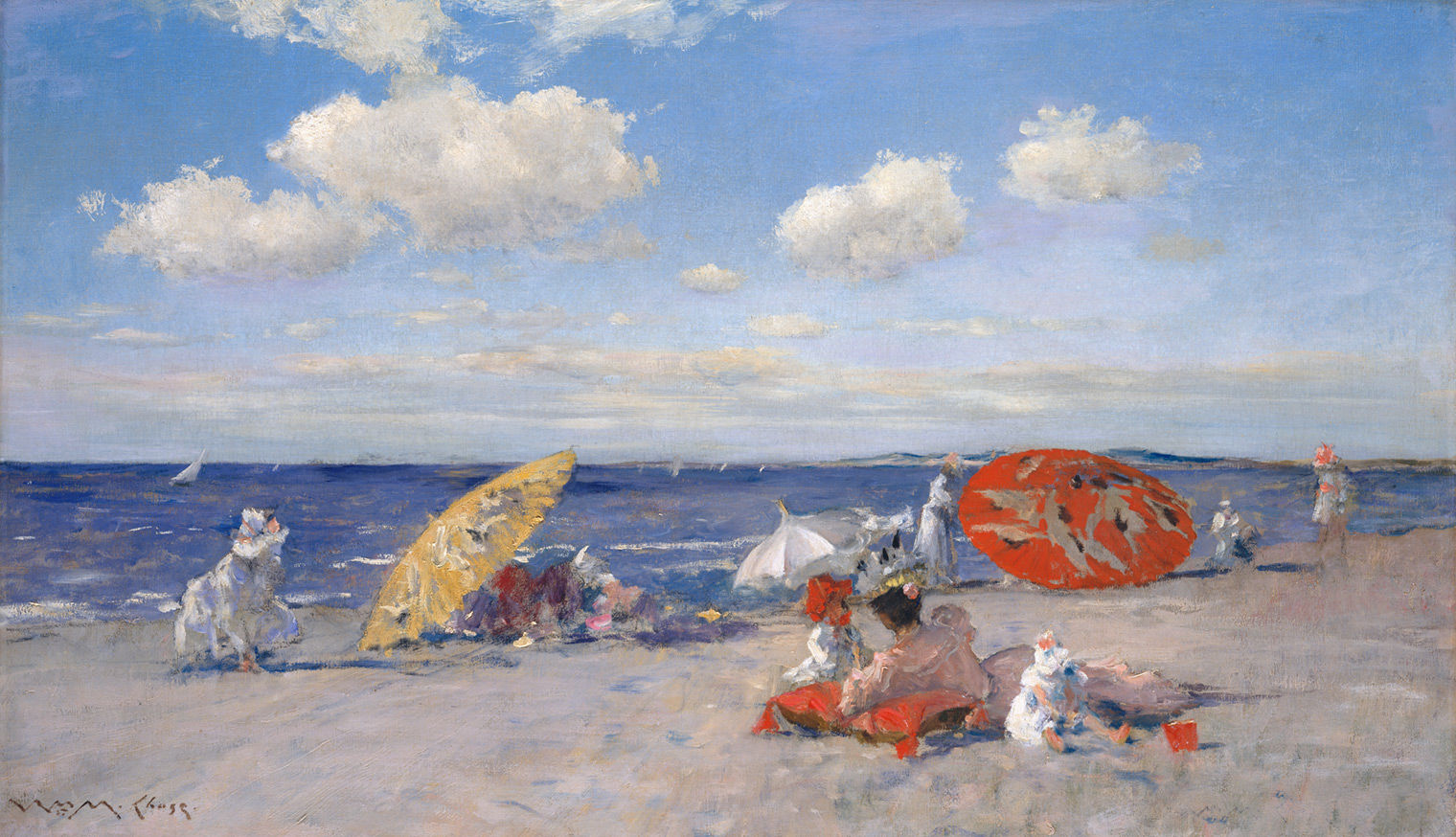
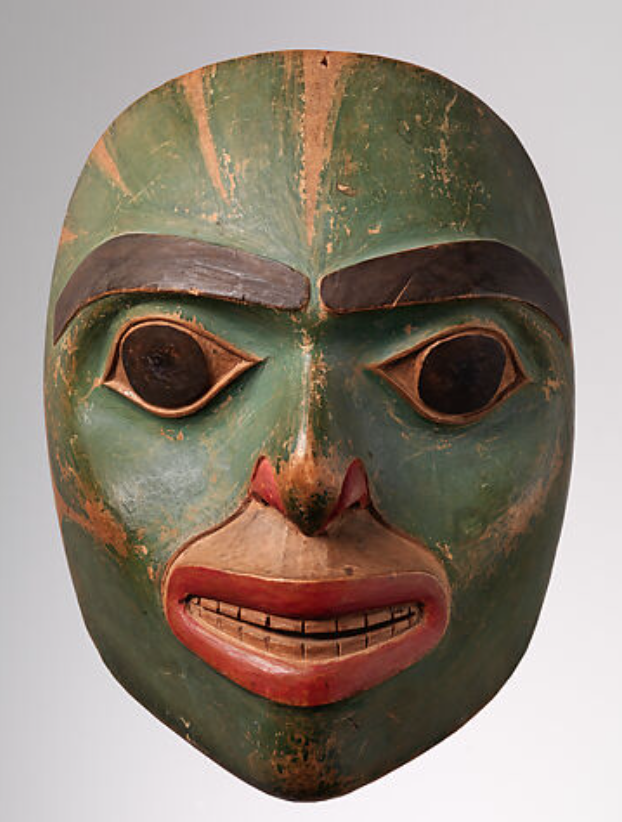
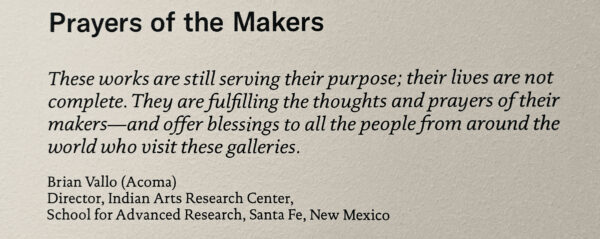
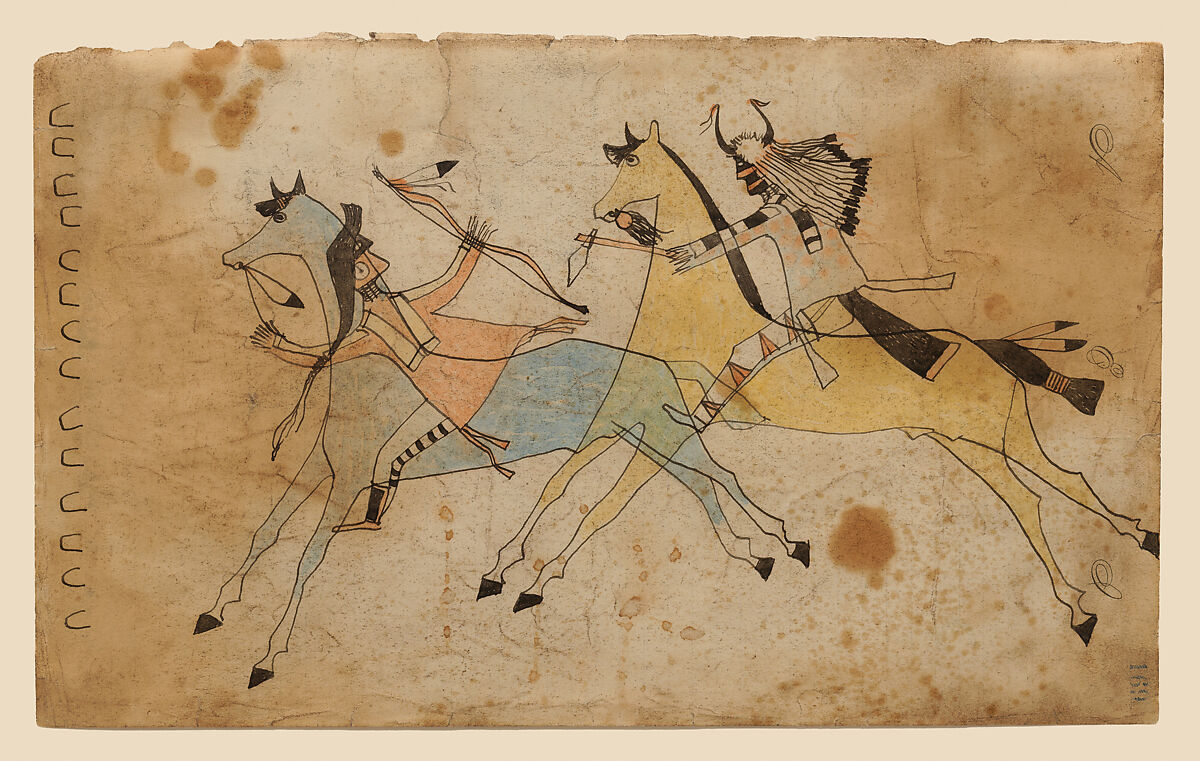
I was very taken by this exquisite little suitcase and the story on the display card.
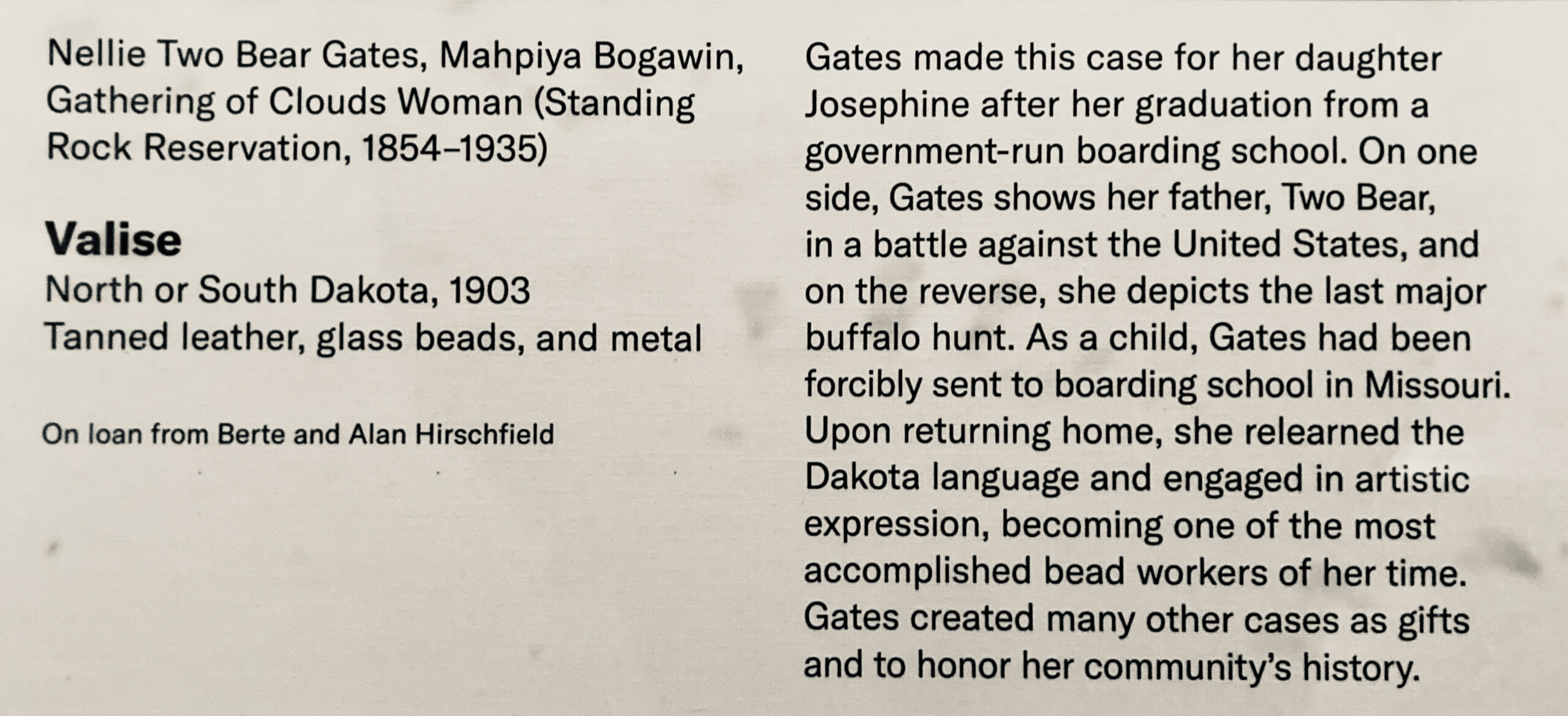
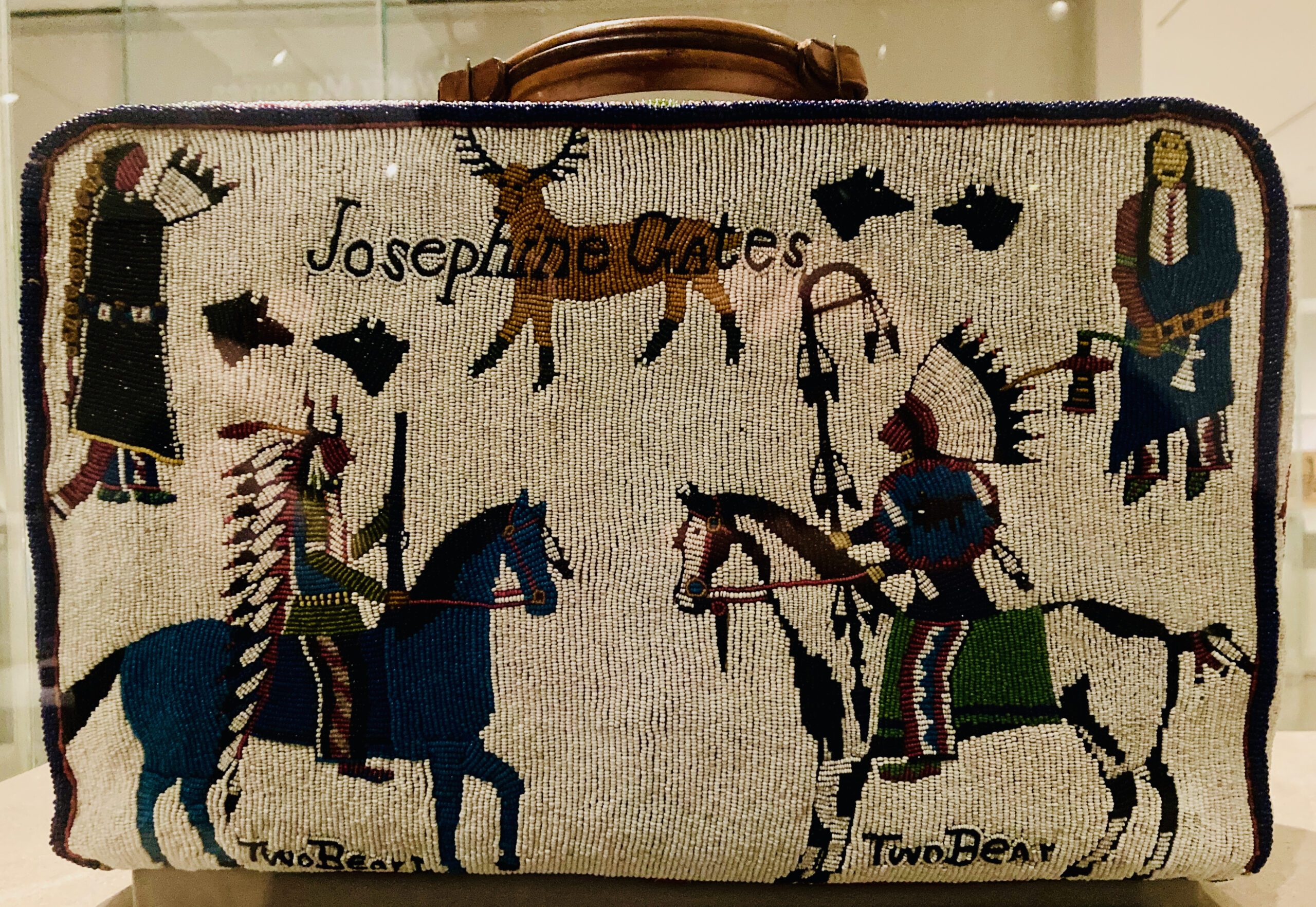
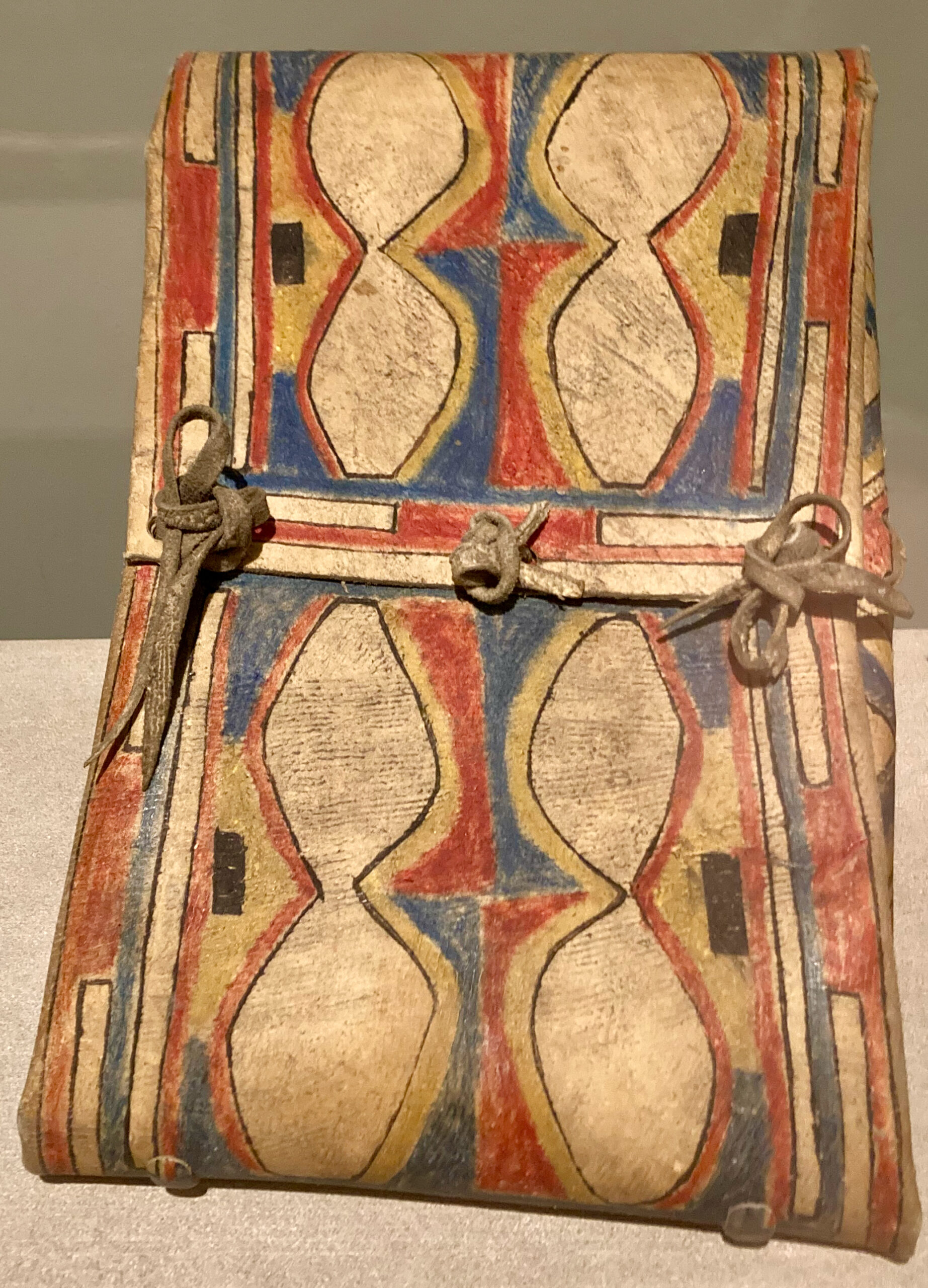
We also saw Beyond the Light – Identity and Place in Nineteenth-Century Danish Art But I’ll save that for the next post.



I was really mesmerized by the River/Water Serpent video with the mirrors making a river of light. I watched it several times. And I love masks.
Yes. It takes hold of the senses and doesn’t let go. The whole exhibit is a like a contained cabinet of wonders.
The work on that little suitcase is simply stunning, off to try and find out more about Two Bear Gates and her work.
I had the same reaction.
love that bark canoe —
The Native art takes my breath away. Bead work simply stunning.
Sheila Morris´s last blog post ..waiting on the next thing smoking
I am fascinated by the history of native Americans and European colonisation. So thanks for posting.the artefacts underline their skills, help tell their on going history and are creatively beautiful. Sounds a worthwhile visit..if tiring …and so worthy of another visit.
A wonderful walk. Fascinating! A feast for the eyes whilst pulling at the heart 🙋♂️
The valise is beautiful. And the canoe. It must have been an enjoyable expedition.
It was. Both inspiring and fatiguing. Had to take a cab home!